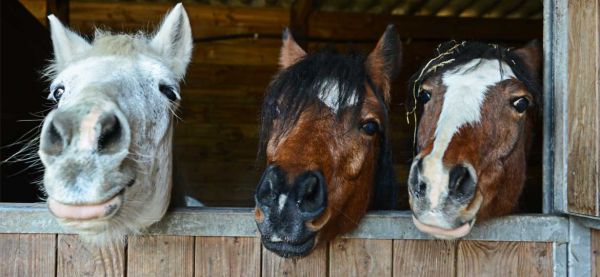If we travel back in time to the origins of horses, we must go back to around 3500 BC, when the first records and domestication of horses were made in the region of Kazakhstan. Since then, the horse has evolved within the equid family and has been domesticated by humans, making it today – alongside dogs – one of the animals that has always been closest to humans.
At Ovohorse, specialists in equine reproduction, we have gathered the most amazing and incredible facts about this noble and spectacular species.
8 FACTS ABOUT HORSES THAT YOU PROBABLY DIDN’T KNOW
- Horses sleep standing up
Yes! Horses can sleep standing up. Although they can also sleep lying down. Horses need to rest for at least 30 minutes each day to achieve a full, restorative sleep cycle, unlike humans who need an average of 7-8 hours per day. Several factors can affect a horse’s sleep routine, such as climate, available space, or physical obstacles like musculoskeletal impairments. - Horses are herbivores
Horses have been herbivores since their origins. The shape of their teeth (grinding molars to break down fibrous plant matter), the position of their eyes (looking sideways to be alert for predators), and their digestive system are all typical characteristics of herbivores. - Horses cannot burp
Horses cannot burp, vomit, or breathe through their mouths like humans. A horse’s digestive system only operates in one direction, unlike other animals. Although they have an efficient way to process fibrous and tough food, their long, unidirectional digestive system can lead to gastrointestinal issues. - A horse’s teeth can tell you its approximate age
Although you can’t determine a horse’s exact age by its teeth, you can estimate its age. Horses have continuously erupting teeth, meaning they grow and wear down at the same time. A foal is born without teeth, but from 6 years old, the “Galvayne’s groove” technique can help approximate the horse’s age. - Horses can live over 30 years
One of the most common questions is: “How long can my horse live?” Thanks to advances in nutrition, care, and veterinary medicine, the life expectancy of horses today exceeds 30 years. - Arabian horses have one less vertebra than other breeds
The Arabian horse is the origin of many other horse breeds. It also has some unique features like its sharp muzzle shape. As a fun fact, these horses have one less vertebra, one less rib, and one less tail bone than other breeds. - Horses are herd animals
Although they may seem solitary, it can be very stressful for a horse to live alone. Horses can have a stable mate or even another species, like a goat, donkey, or mule. Even a dog can become a great friend to a horse. - Most white horses are actually grey
Few white horses are born white; they are usually born with a grey tone or even darker shades, and their color changes gradually over time. Some may start as chestnut or almost black and later become white. In fact, these horses are not called white, but grey.
[/vc_column_text][/vc_column][/vc_row]

